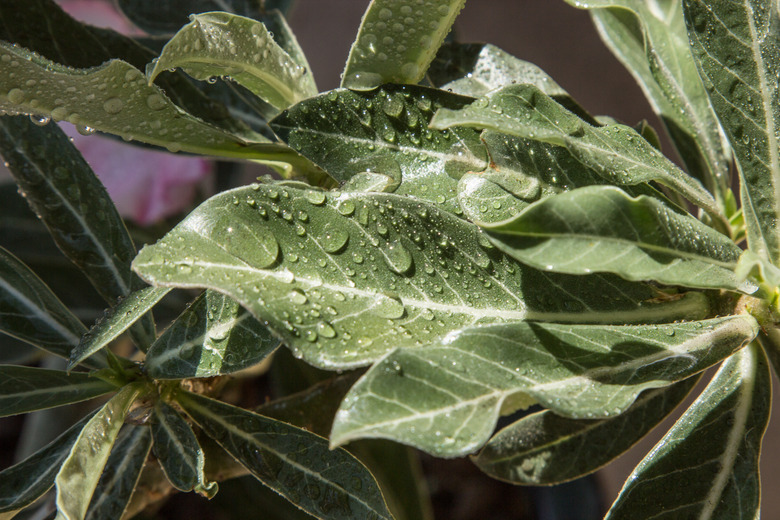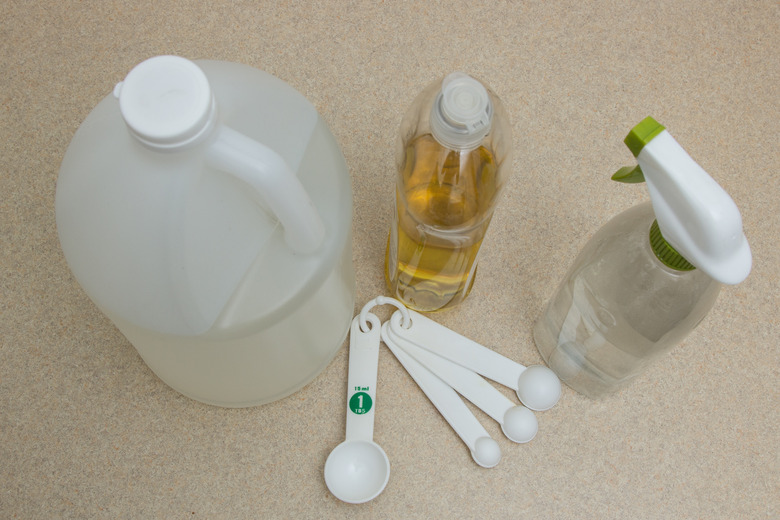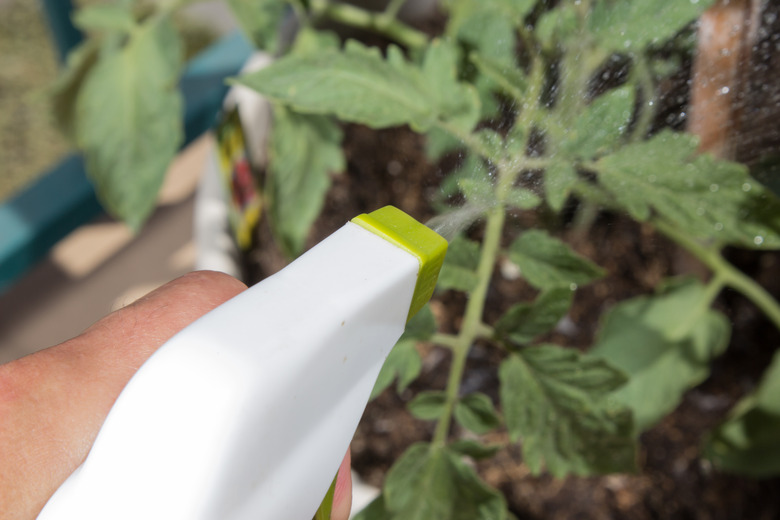Using Soap As A Sticking And Spreading Agent For Herbicides
Herbicides work by drying out the leaves of weeds. Unable to generate enough sunlight for food production, the plants die. The leaves of most plants are coated in a waxy material that protects them from diseases and insects, but that also causes herbicides to drip off.
Herbicides work by drying out the leaves of weeds. Unable to generate enough sunlight for food production, the plants die. The leaves of most plants are coated in a waxy material that protects them from diseases and insects, but that also causes herbicides to drip off. You can minimize this by mixing a surfactant, such as ordinary dish detergent, into the herbicide, which creates a bond between the product and the leaves.
Basic Formula
While you can buy premixed herbicides in spray bottles, other types, such as concentrated liquids or powders, must be diluted or mixed with water and poured into a sprayer. In either case, add dish soap at a rate of 1 tablespoon per 1 gallon of liquid herbicide formula. Mix the dish soap in thoroughly before transferring the liquid to the sprayer and spray both sides of the leaves thoroughly on a dry, calm day when no rain is in the forecast.
- Herbicides work by drying out the leaves of weeds.
- You can minimize this by mixing a surfactant, such as ordinary dish detergent, into the herbicide, which creates a bond between the product and the leaves.
Pros and Cons
Dish detergent mixes easily with liquid or powdered herbicides. It disperses evenly across the surfaces of leaves, breaking down their waxy coating and penetrating the pores. Purdue University Cooperative Extension Service suggests dish soap may dilute the effectiveness of the herbicide, and may combine with hard water to clog the sprayer.
2,4-d Herbicides
Weeds don't just detract from the garden's visual appeal; they also take nutrients and water away from desirable plants. Use 2,4-D herbicide before planting your garden, as it may damage flowers, fruits and vegetables already in the ground. Put on protective gear before mixing or spraying 2,4-D herbicide. Wear safety glasses, socks, chemical-resistant footwear, a long-sleeved shirt and pants. Spray the herbicide when wind speed does not exceed 6 to 7 mph. Fill the tank with another 1/2 gallon of water. Add 1 tablespoon of a surfactant, such as liquid dish soap, to the mixture. Apply the 2,4-D herbicide as a spot treatment by spraying it on individual weeds. Spray the tops and bottoms of leaves, stems and flowers. Keep animals away from the area as well. Clean the tank out thoroughly after using the herbicide. Wash all protective clothing in a separate load of laundry.
- Dish detergent mixes easily with liquid or powdered herbicides.
- Use 2,4-D herbicide before planting your garden, as it may damage flowers, fruits and vegetables already in the ground.


